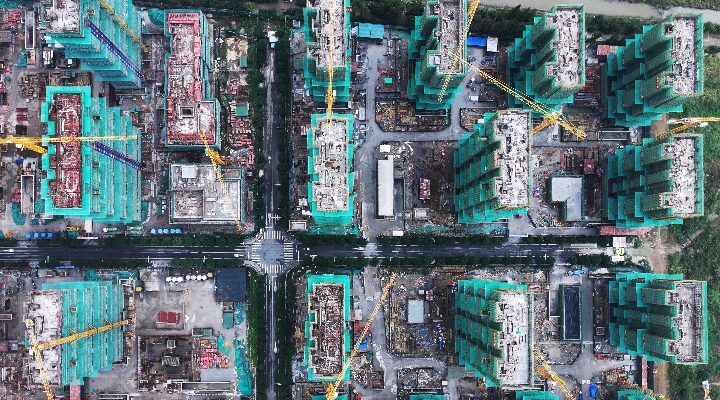This article is part of the Morningstar's Guide to Emerging Market Investing. Click here to find out just what an emerging market is and which regions hold the potential to boost your investment portfolio.
Investing in China? No doubt you’re clued up on the negatives; worryingly high debt levels and concerns about an economic slowdown. But did you know about the Eastern superpower’s plans to improve global trade, and along with it, stock market gains and economic growth?
The Belt and Road Initiative is a massive $5 trillion infrastructure project, designed to connect South East Asia with Europe, via Africa and Russia, funded by Chinese investment. These projects include infrastructure and energy projects across emerging economies including roads, bridges, gas pipelines, ports, railways and power plants.
Proposed by Chinese President Xi Jinping in 2013, countries across the Middle East, Eastern Europe, Africa, Asia and Australasia signed up. These 65 countries include Poland, the Czech Republic, Bulgaria, Saudi Arabia, Turkey, Israel, Pakistan, Indonesia and Ethiopia. Even New Zealand is involved.
“Up to $5 trillion worth of investment over the next five years will be pumped into the Belt and Road Initiative. It requires a lot of financing. The projects cannot rely solely on funding from the Chinese government or Chinese infrastructure investment banks.
“The money cannot only come from countries that are involved in the project, but also from the UK and other European countries, creating investment opportunities,” said Jinny Yan, chief China economist at ICBC Standard Bank.
Belt and Road: An Investment Opportunity?
China’s investment in Belt and Road countries has surpassed $50 billion, according to the Chinese press agency, Xinhua. At the Belt and Road conference in May, President Xi pledged an additional 100 billion yuan, which is equivalent to $14.7 billion, to China’s Silk Road Fund. He also pledged 280 billion yuan in new lending for participating nations, or $41.2 billion in US dollar terms, and 60 billion yuan, which is $8.8 billion, in coming years to developing countries and international organisations that join the programme.
President Xi told the almost two dozen world leaders gathered at the forum that they should “uphold and grow an open world economy.”
However, from a foreign investor perspective, given that the majority of investment in Belt and Road is mainly Chinese, this gives a limited window for a foreign investor, said Jan Dehn, head of research at Ashmore, the emerging market firm.
“Traditionally there are two ways to invest in projects for foreign investors: providing the financing or executing the project itself, but it also depends on whether they are qualified to bid in those projects. In the Belt and Road Initiative it is Chinese companies that execute these infrastructure projects so that obviously leaves a limited amount of room for foreign companies to bid on those contracts,” said Dehn.
Investing in these infrastructure projects may not work for investors with a short-term view according to Belinda Boa, chief investment officer of emerging markets at BlackRock. She warned it would take up to 15 years to see the profits of the Belt and Road Initiative.
Investing in Private Companies that will Benefit
Naomi Waistell, portfolio manager of Newton Global Emerging Markets suggests investing in private companies that can profit from the increased trade, rather than the infrastructure itself.
“There will be some knock-on benefits. Entrepreneurial companies are looking for ways to make the Belt and Road Initiative work for them. For example, Alibaba announced that they will set up warehouses along the Belt. We are more excited about those types of opportunities rather than heavy industrial investment,” said Waistell.
Who Will Most Benefit?
The most attractive Belt and Road countries to invest in are the United Arab Emirates and Estonia, according to research compiled by Oxford Economics and ICBC Standard Bank.
“There has been a 60% increase in connectivity between China and other countries in the past 10 years,” said Tom Rogers of Oxford Economics.
Looking forward, Rogers believes the Eastern European countries will have a higher-level connectivity with China than Asian countries, as these eastern European countries are more aligned with China and its plans to be a more consumer-led economy. There are 21 Central and Eastern European countries signed up to Belt and Road including Estonia, Poland and Romania.
Boosting Economic Growth
Although it remains to be seen whether the Belt and Road Initiative can be delivered, the massive infrastructure project plays a significant role boosting the Chinese and Asian economies over the long term, said BlackRock’s Boa.
“With the huge infrastructure and fiscal spending, it is positive for economic growth, not just for China but for the Asian region too,” said Boa.
“What China is trying to do is to force closer bilateral collaboration across the region, and opening up trading, while other countries like US are moving in the opposite direction, getting worried about protectionism. So that is something that we are positive about,” added Newton’s Waistell.
This planned series of infrastructure projects would form an unequalled network of trade and investment linking China by land through central Asia and Russia to Europe, and by sea through Africa and the Mediterranean, Stéphane Monier, head of investments with Lombard Odier Private Bank argued.
“While details are sketchy at present, and many projects may never be realised, it looks at the very least to be a shrewd political move, inspiring regional goodwill and promising gains for China’s neighbours and wider trading network,” said Monier.
Belt and Road has also helped boost the economies of countries that have been constrained by infrastructure undersupply historically, said Ashmore’s Dehn.
“China’s targeting of countries that have historically been undersupplied with infrastructure is significant to the growth of these economies. Africa, for example, which in many years has shortage of foreign investments, has been benefited from Chinese investments. China has also heavily invested in South America – there is an argument that Venezuela for example, cannot survive without aid from China,” said Dehn.






























